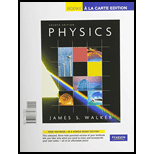
Concept explainers
(a)
Interpretation:
The formula of the coordination compound formed by Pt4+ with NH3 needs to be determined.
Concept introduction:
Coordination compounds are those in which a transition metal atom is bonded to a ligand which can be neutral, cationic or anionic. The
(b)
Interpretation:
The formula of the coordination compound formed by Ag+ with cyanide ion needs to be determined.
Concept introduction:
Coordination compounds are those in which a transition metal atom is bonded to a ligand which can be neutral, cationic or anionic. The transition metal element is enclosed within a bracket and a charge is present on the ion to balance the charge present on the ligands. The total charge present on any complex ion is equal to the sum of the oxidation number of the central metal atom and the total charges of the ligand present in it.
(c)
Interpretation:
The formula of the coordination compound formed by Zn2+ with C2 O4 2- needs to be determined.
Concept introduction:
Coordination compounds are those in which a transition metal atom is bonded to a ligand which can be neutral, cationic or anionic. The transition metal element is enclosed within a bracket and a charge is present on the ion to balance the charge present on the ligands. The total charge present on any complex ion is equal to the sum of the oxidation number of the central metal atom and the total charges of the ligand present in it.
(d)
Interpretation:
The formula of the coordination compound formed by Cd2+ with cyanide ions needs to be determined.
Concept introduction:
Coordination compounds are those in which a transition metal atom is bonded to a ligand which can be neutral, cationic or anionic. The transition metal element is enclosed within a bracket and a charge is present on the ion to balance the charge present on the ligands. The total charge present on any complex ion is equal to the sum of the oxidation number of the central metal atom and the total charges of the ligand present in it.
Want to see the full answer?
Check out a sample textbook solution
Chapter 19 Solutions
Student Solutions Manual For Masterton/hurley's Chemistry: Principles And Reactions, 8th
- 8:16 PM Sun Mar 30 K Draw the major product of this reaction. Ignore inorganic byproducts. Proble 1. CH3MgBr 2. H3O+ F Drawingarrow_forwardо но оarrow_forwardName the major organic product of the following action of 4-chloro-4-methyl-1-pentanol in neutral pollution 10+ Now the product. The product has a molecular formula f b. In a singly hain, the starting, material again converts into a secule with the molecular kormula CIO. but with comply Draw the major organic structure inhalationarrow_forward
- Macmillan Learning Alcohols can be oxidized by chromic acid derivatives. One such reagent is pyridinium chlorochromate, (C,H,NH*)(CICTO3), commonly known as PCC. Draw the proposed (neutral) intermediate and the organic product in the oxidation of 1-butanol by PCC when carried out in an anhydrous solvent such as CH₂C₁₂. PCC Intermediate OH CH2Cl2 Draw the intermediate. Select Draw Templates More с H Cr о Product Draw the product. Erase Select Draw Templates More H о Erasearrow_forwardIf I have 1-bromopropene, to obtain compound A, I have to add NaOH and another compound. Indicate which compound that would be. A C6H5 CH3arrow_forwardProvide the reagents for the following reactions.arrow_forward
- If I have 1-bromopropene, to obtain compound Z, I have to add two compounds A1 and A2. Indicate which compounds are needed. P(C6H5)3arrow_forwardDraw the major product of this reaction. Ignore inorganic byproducts. Assume that the water side product is continuously removed to drive the reaction toward products. O CH3CH2NH2, TSOH Select to Draw >arrow_forwardPredict the major organic product(s) for the following reaction.arrow_forward
- Predict the major organic product(s) for the following reactions.arrow_forwardProvide the complete mechanism for the reactions below. You must include appropriate arrows,intermediates, and formal charges.arrow_forwardIndicate the products obtained by reacting fluorobenzene with a sulfonitric mixture.arrow_forward
 Chemistry: Principles and ReactionsChemistryISBN:9781305079373Author:William L. Masterton, Cecile N. HurleyPublisher:Cengage Learning
Chemistry: Principles and ReactionsChemistryISBN:9781305079373Author:William L. Masterton, Cecile N. HurleyPublisher:Cengage Learning Chemistry: The Molecular ScienceChemistryISBN:9781285199047Author:John W. Moore, Conrad L. StanitskiPublisher:Cengage Learning
Chemistry: The Molecular ScienceChemistryISBN:9781285199047Author:John W. Moore, Conrad L. StanitskiPublisher:Cengage Learning ChemistryChemistryISBN:9781305957404Author:Steven S. Zumdahl, Susan A. Zumdahl, Donald J. DeCostePublisher:Cengage Learning
ChemistryChemistryISBN:9781305957404Author:Steven S. Zumdahl, Susan A. Zumdahl, Donald J. DeCostePublisher:Cengage Learning Chemistry: An Atoms First ApproachChemistryISBN:9781305079243Author:Steven S. Zumdahl, Susan A. ZumdahlPublisher:Cengage Learning
Chemistry: An Atoms First ApproachChemistryISBN:9781305079243Author:Steven S. Zumdahl, Susan A. ZumdahlPublisher:Cengage Learning
 Principles of Modern ChemistryChemistryISBN:9781305079113Author:David W. Oxtoby, H. Pat Gillis, Laurie J. ButlerPublisher:Cengage Learning
Principles of Modern ChemistryChemistryISBN:9781305079113Author:David W. Oxtoby, H. Pat Gillis, Laurie J. ButlerPublisher:Cengage Learning





